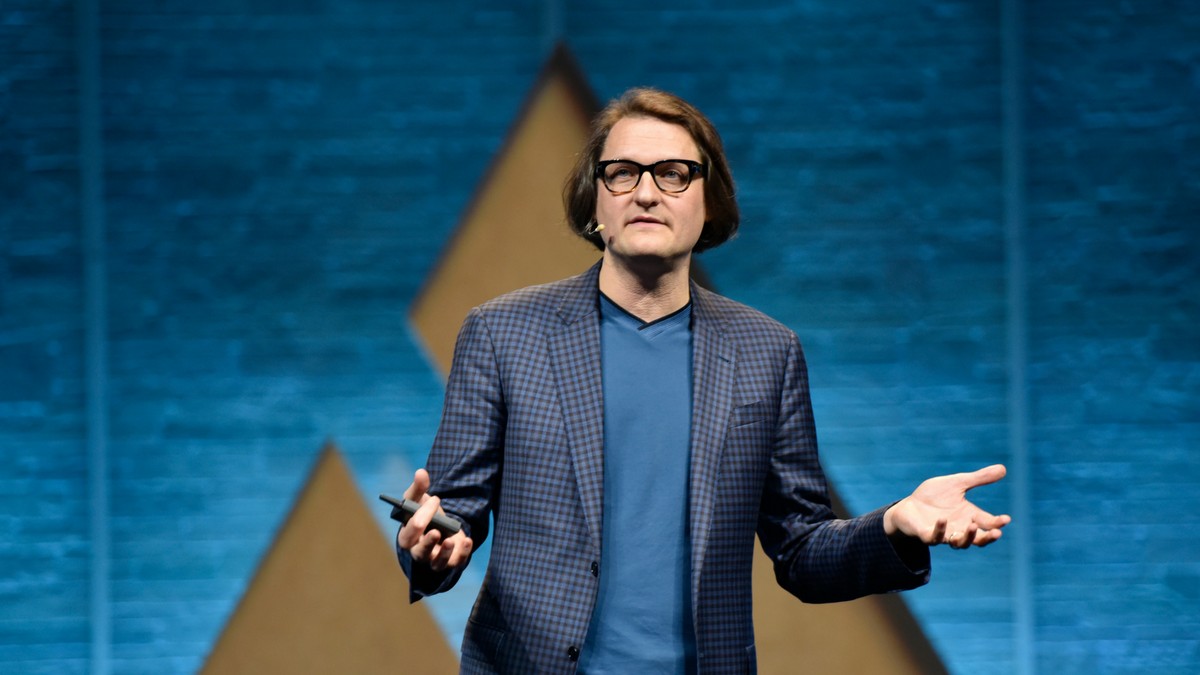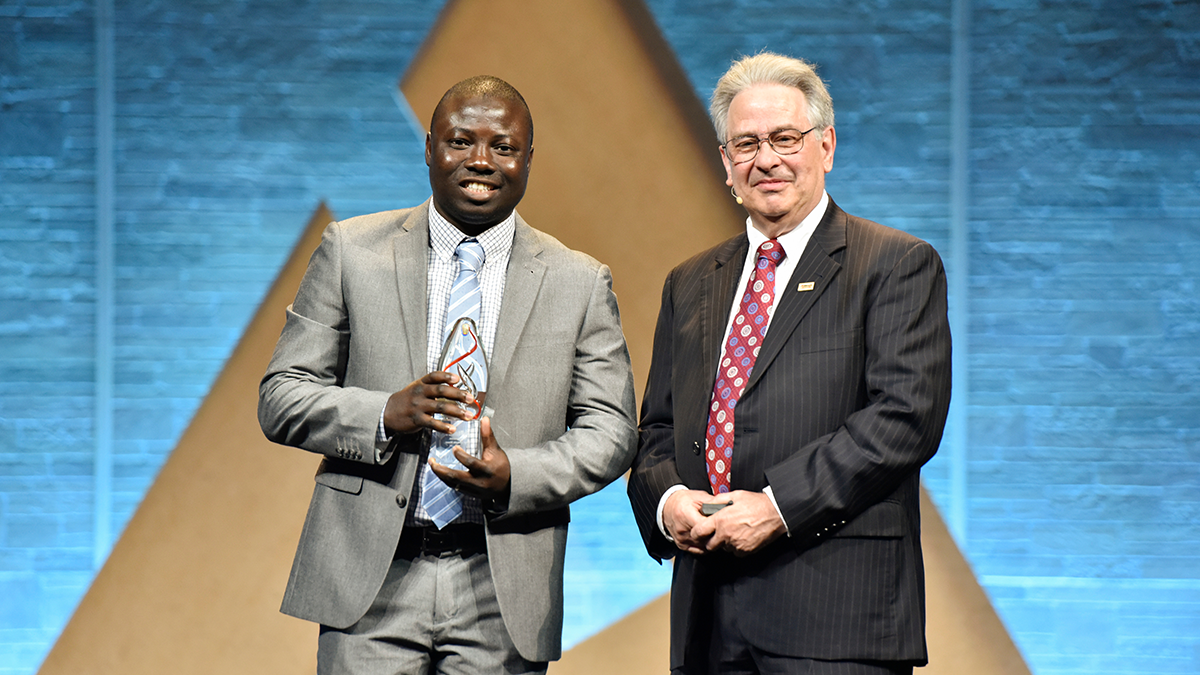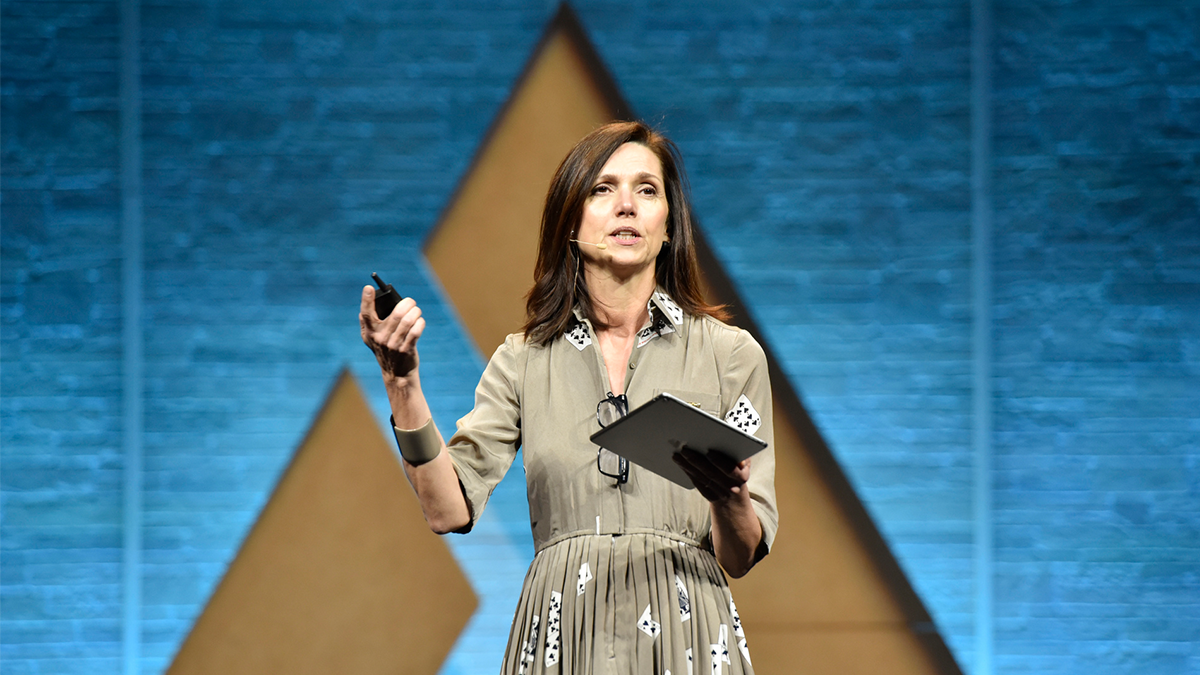“I have a confession to make,” said Beth Comstock, former vice chair at General Electric and the first woman ever to hold the post. “I call myself a change-maker, but I have to tell you — I really don’t like change.
“But, the reality is,” she continued, “like change or not, we have to be ready for it.”
So, how do we get our heads around change? During her presentation at ONE: The Alltech Ideas Conference, Comstock said that the key is to shift your mindset.
“It really comes down to this one thing,” she said. “You have to imagine a future that few others can see, and then you have to take action to make it happen.”
Everyone, she emphasized, is capable of exactly that if you follow these three tips:
1. Change starts with giving yourself permission
“Change isn’t really the scary part,” said Comstock. “It’s that most of us don’t know how to handle change.”
The thing that is holding us back? Fear.
In today’s hyperconnected world, in which we often focus more on efficiency than on creativity, she said we have to move forward without knowing all the answers.
A critical part of the problem is something that Comstock calls the “imagination gap,” where “possibility goes to die.”
Our search for greater efficiency and perfection has developed an almost mechanical work culture that fears creativity and failure. Not only is “failure” a word we refuse to talk about in our organizations — 75 percent of people say they do not feel creative at work — it is putting pressure on children as well, a time when developing imagination is critical.
Comstock believes this imagination gap is holding us back by crowding out the very human nature of us.
“Everyone’s job is now change,” she said. “You can’t delegate it. You have to understand it starts with you.”
The number one way to shift your mindset and achieve change is to give yourself, and your teams, permission to change, including trying and testing new things. This includes giving yourself permission to fail.
Comstock has even given herself and her team members physical “permission slips” to express fear and give themselves permission to try things that might not work. Importantly, this permission also includes giving feedback to other team members to foster accountability.
“Feedback is oxygen for a change-ready mindset,” she said. “Seek it. Give it. Use it.”
What do you fear? Pinpointing that fear, and engaging with it head-on, is the first step to creating and better adapting to change.
2. Make room for discovery
“You have to lead with curiosity,” said Comstock. “You have to see for yourself.”
To do so, she suggests “wallowing” in an idea, which includes getting to know your team members, your market and where change is happening, as well as spotting trends. She also urges investigating points of view that contradict your own and going on journeys of discovery with your entire team.
As someone who loves patterns, Comstock recommends looking for connections and following her “going on 3’s” rule: If you spot an occurrence of something new three times, it may be a trend that is worth paying attention to, such as video streaming and the craft beer movement.
Ten percent of your time, she said, is spent on what you already know. Instead, we should be focusing that time on creating something new.
“Most people think they don’t have the time, that this isn’t their job,” said Comstock.
An easy, business school-based breakdown of how you might spend your time more innovatively might look like this, she said:
- 70 percent on core innovations, or the projects on which you are already focusing
- 20 percent on what’s next, or today’s fresh, new ideas (e.g., CRISPR gene-editing technology)
- 10 percent on what’s new, or the ideas that have the potential to change the world five, 10 or 20 years from now
Even though 10 percent might not sound like much, taking even this small amount of time to look beyond the status quo and innovate new ideas can reap big rewards.
“What’s your 10 percent?” asked Comstock, inviting the audience to identify time that they could spend thinking innovatively. “I know you have it! How are you going to liberate your teams to go out and discover?”
3. Embed learning — and failure — into your operating system
We must engage the world as our classroom, and the way to do so is to change our work culture, including the words we use and the actions we take.
“Learning cultures require that you put more questions into the system than answers,” said Comstock.
One of the most powerful outcomes of promoting continuously learning and empowering your team, she said, is finding out that there are many entrepreneurs in your organization. Find these people who are not afraid to make messes and support them in creating new ideas — and allowing them to kill those ideas when they simply are not ready.
At General Electric, Comstock applied this method in the wider community as well, partnering with local startups to solve a critical appliance problem. By “open sourcing” the problem, she explained that you can narrow your window of risk, bring integrated teams together and create more options so that when change arrives, you can be more confident about what ideas are appropriate to scale.
Not only should learning be a key element of work culture — so should failure.
“If failure isn’t an option,” said Comstock, “neither is success.”
She encourages inviting your team to share what went wrong with an idea, what they learned and how they plan to make it better moving forward. In order to be truly ready for change, we need more people with imagination to fight for the future, despite fear of failure.
Imagination isn’t a glitch, she said. In fact, it’s our best feature.
“I’m a beginner,” admitted Comstock. “I don’t have the answer yet — I don’t even know what the question is. But I’m committed to figuring it out.”


















